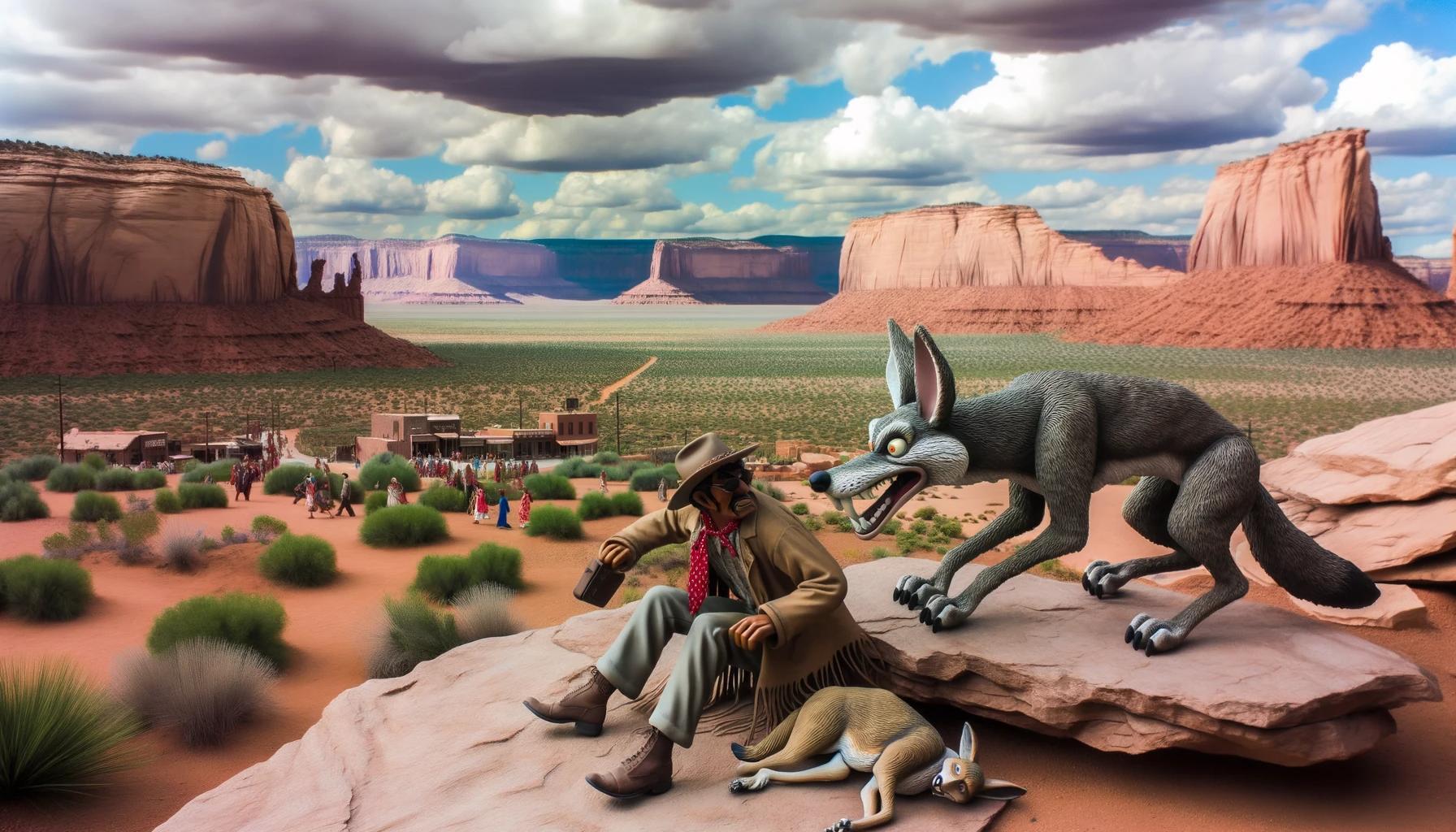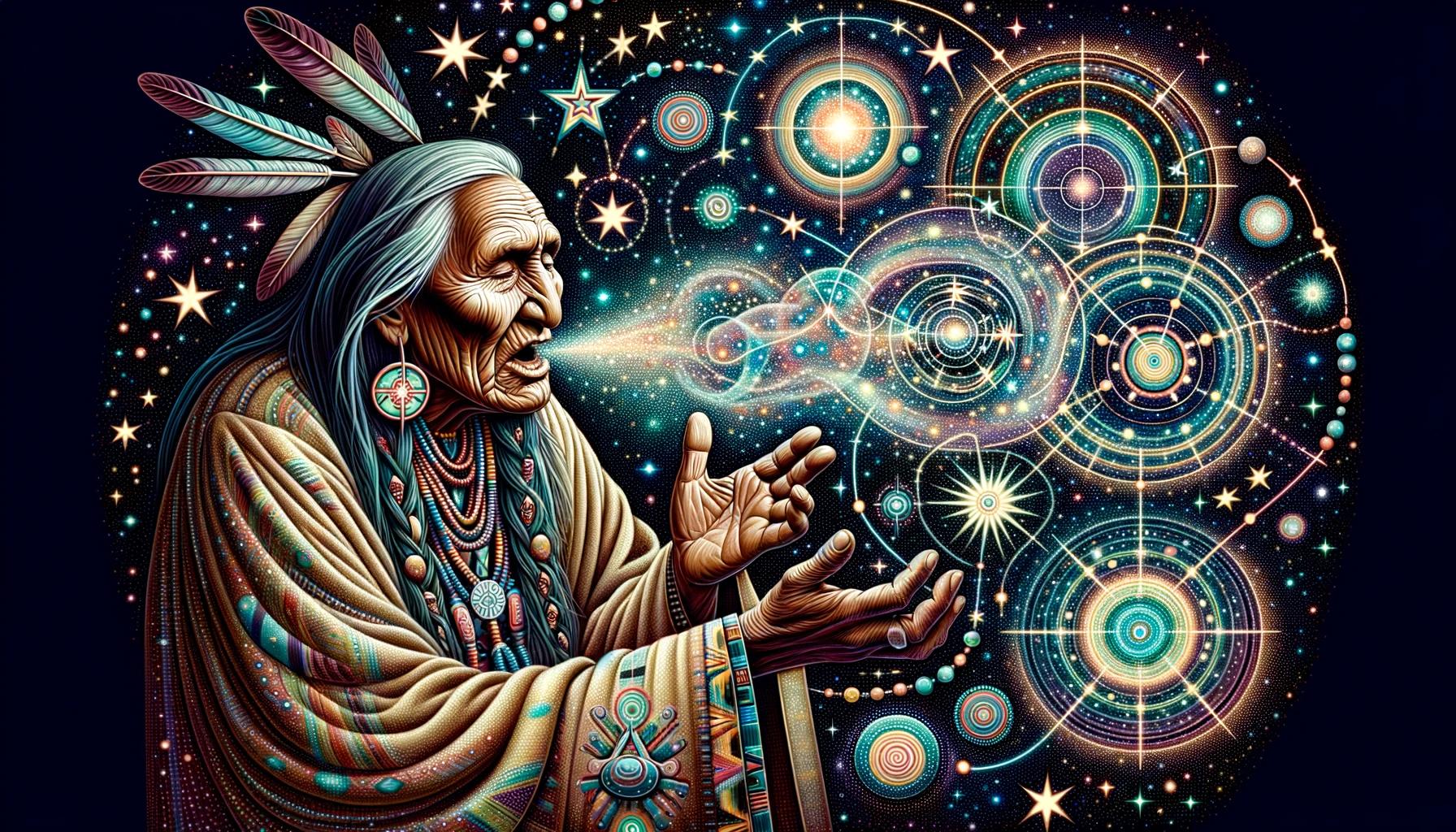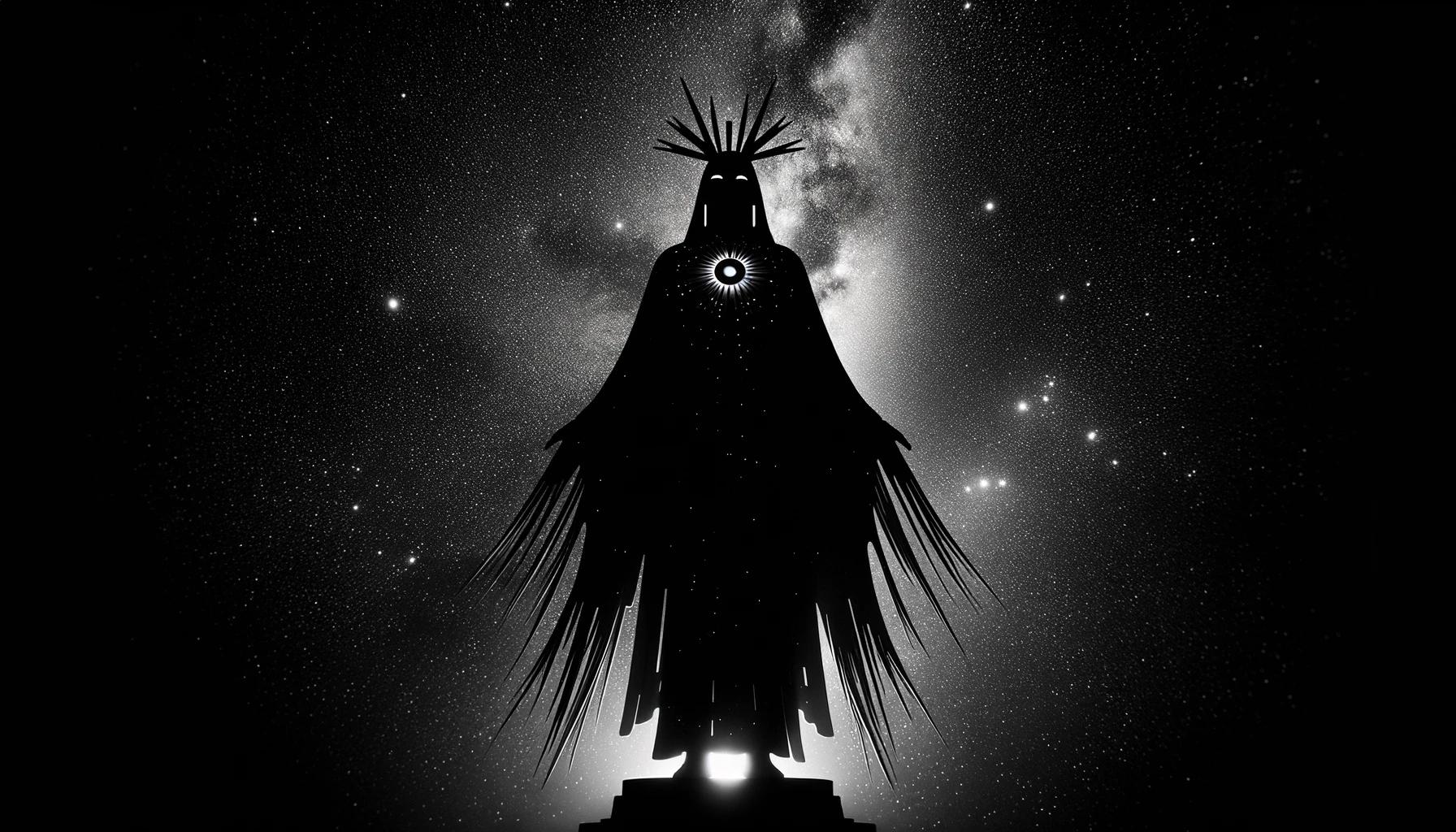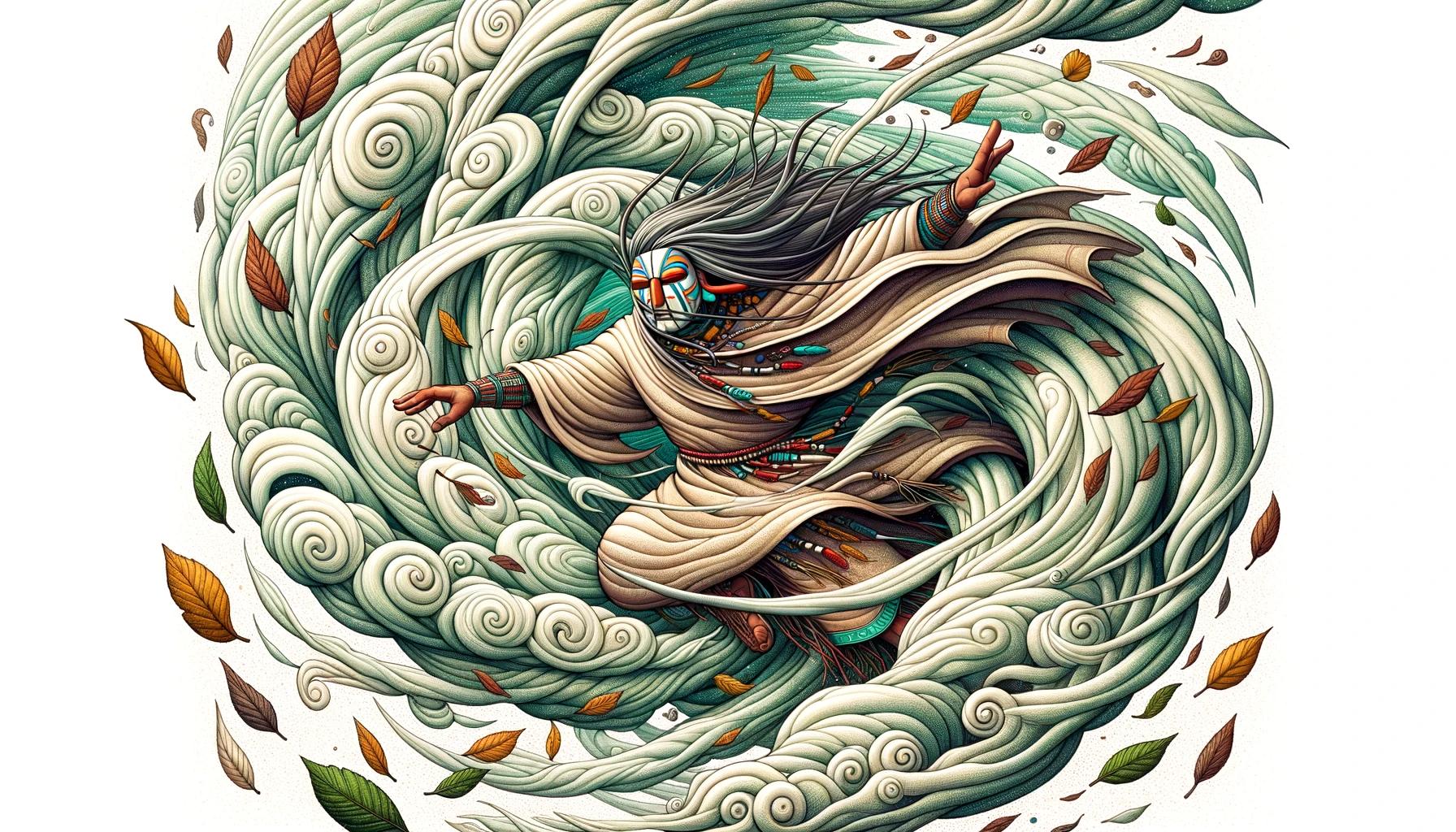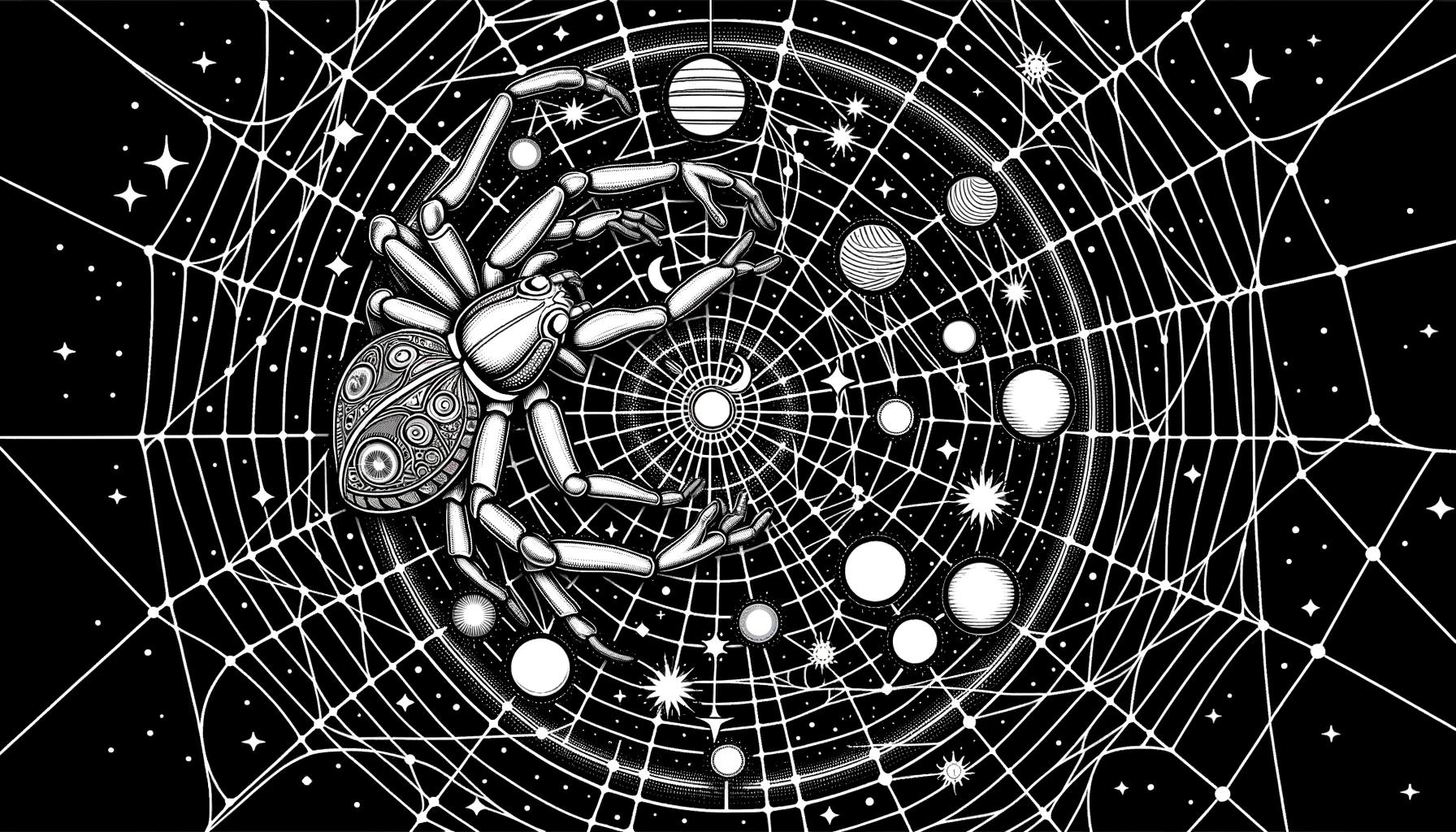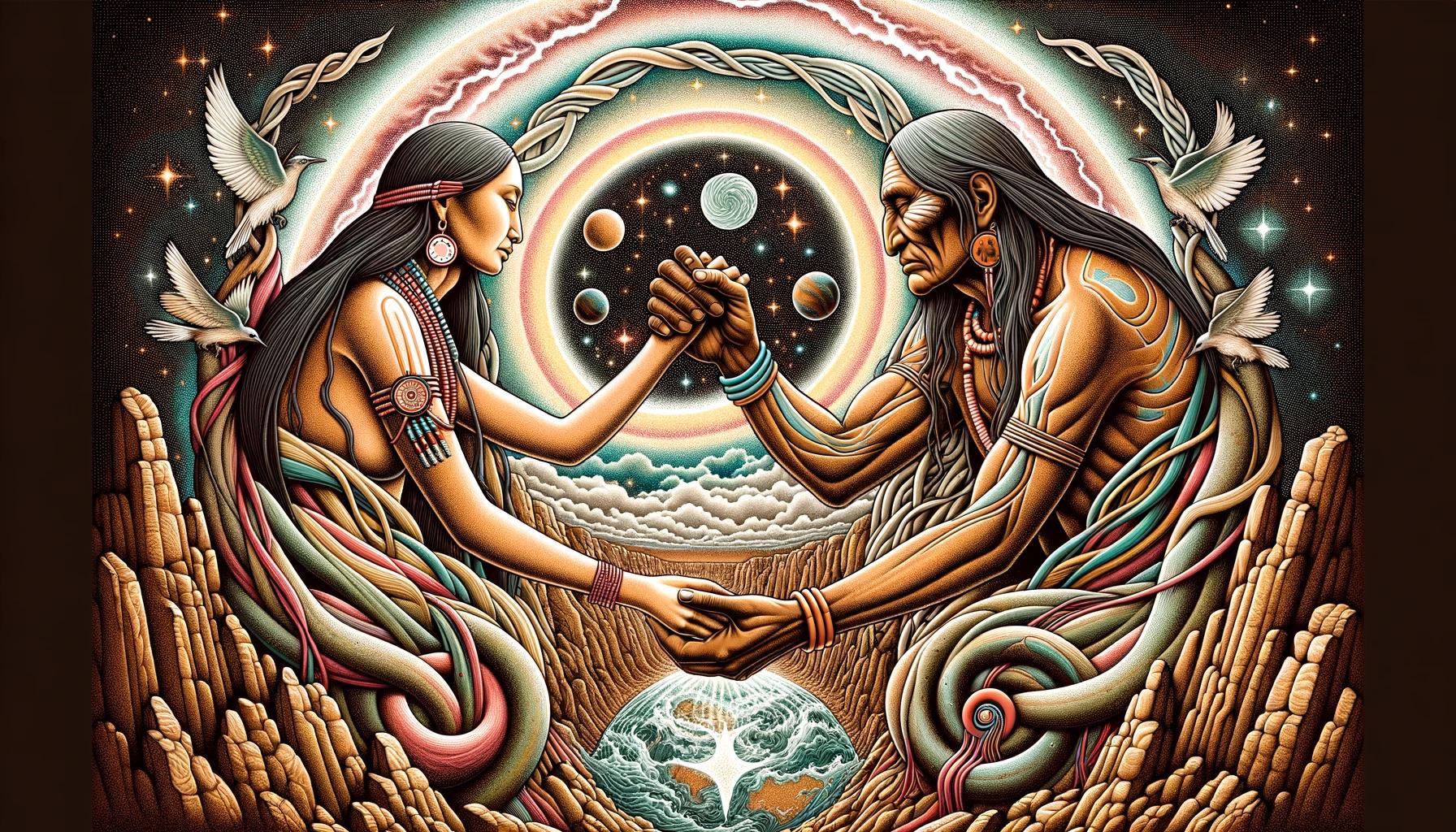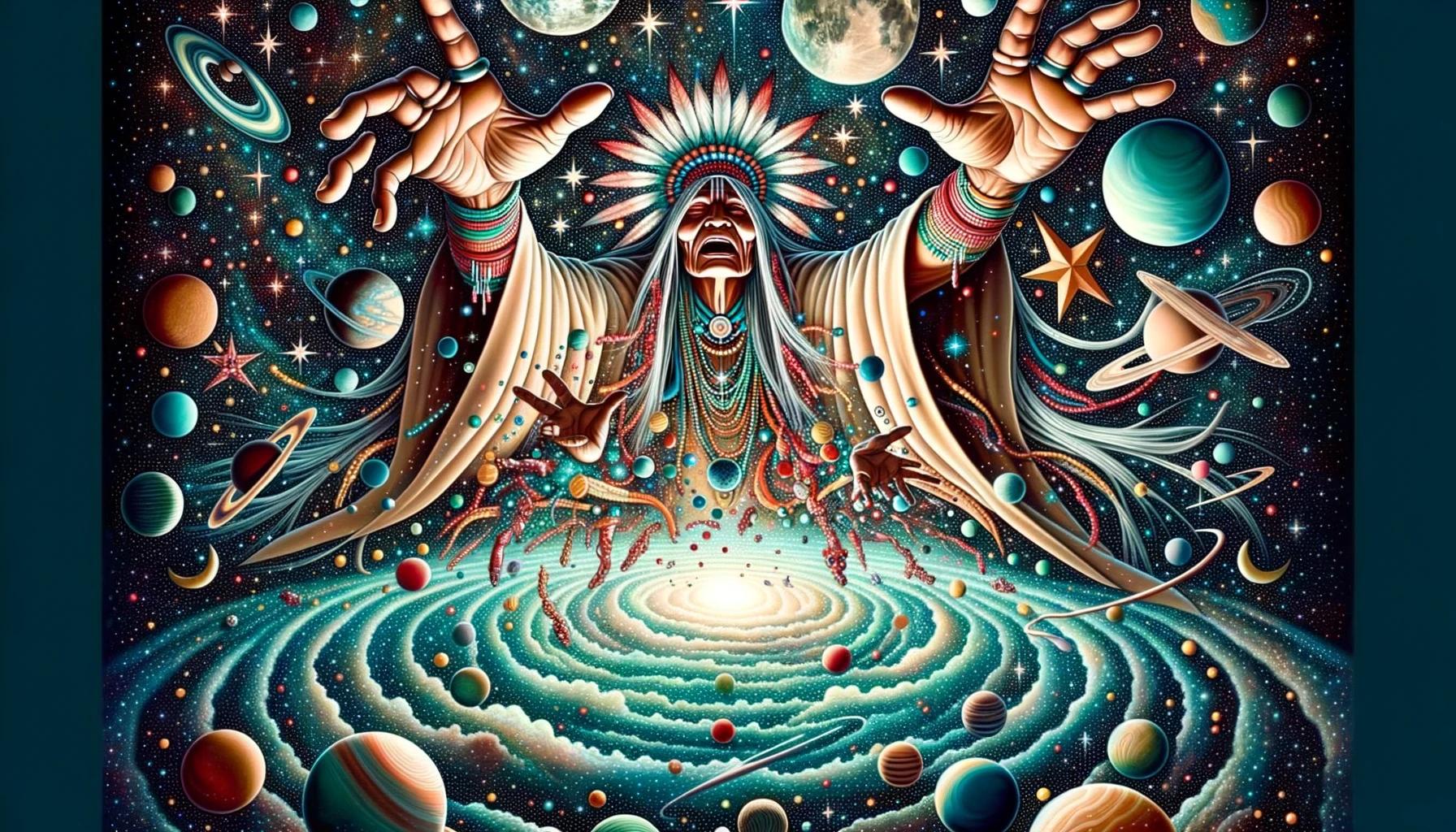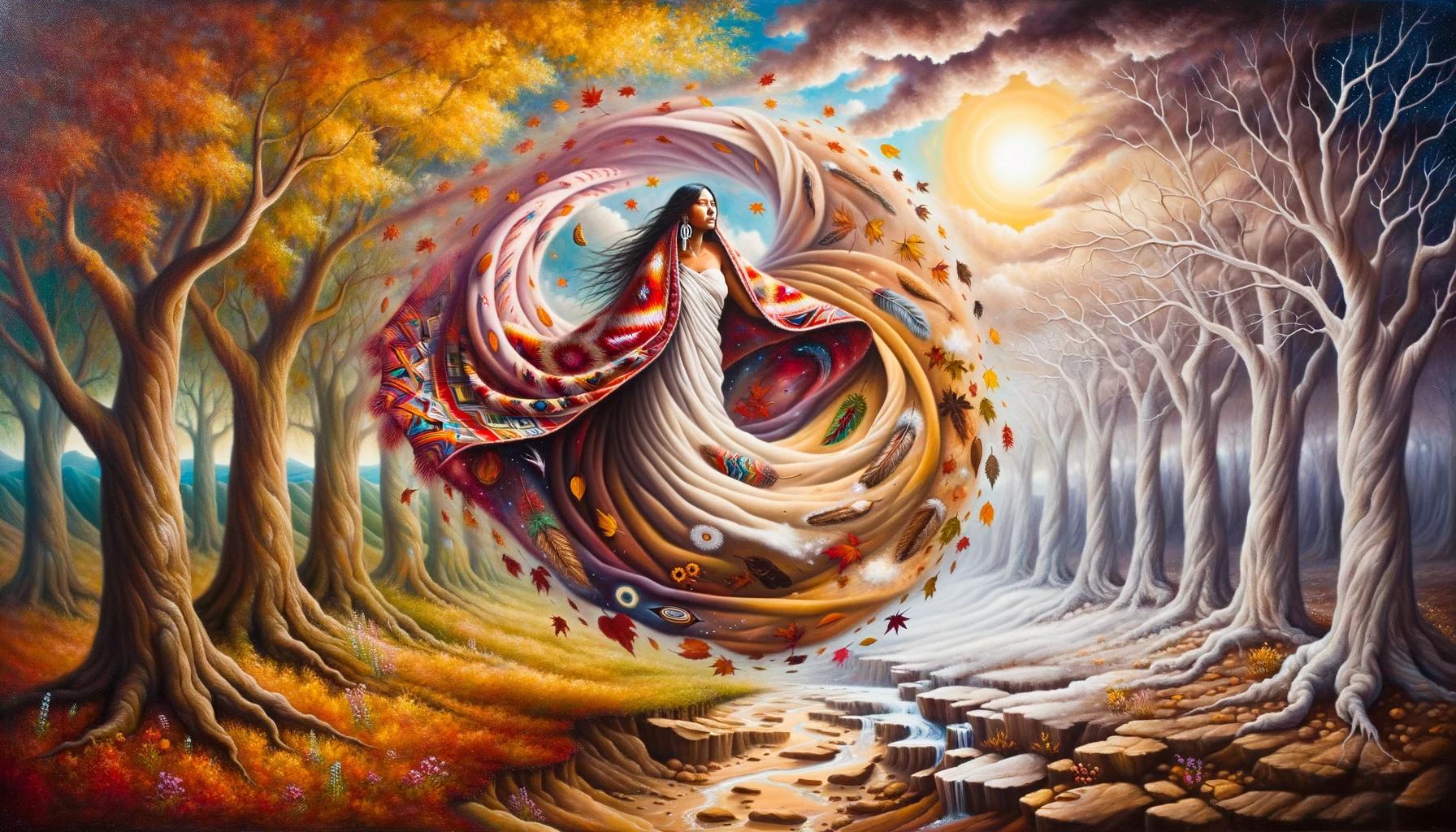The Fascinating Story of Coyote in Navajo Mythology
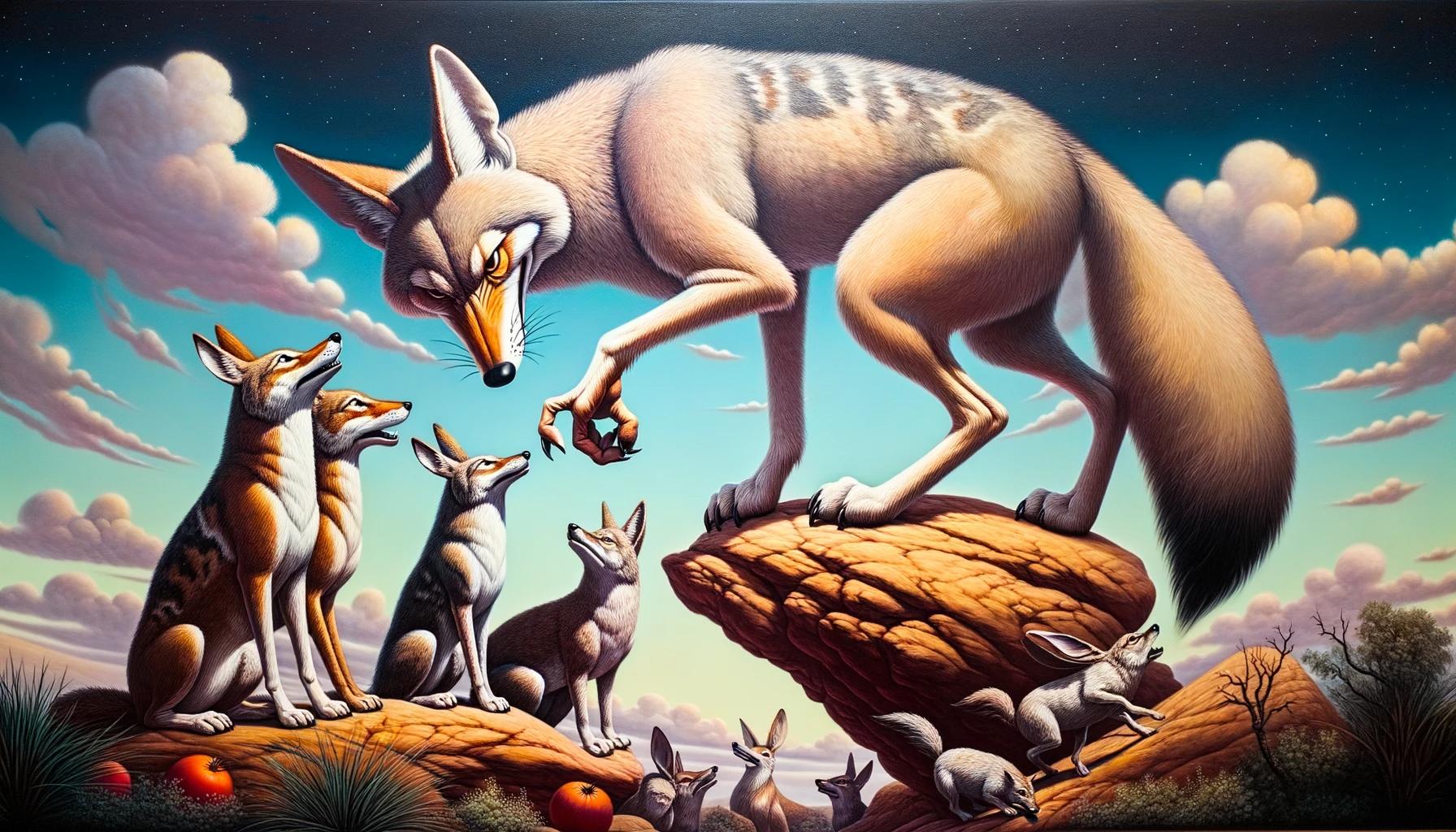
Coyote is a significant figure in Navajo mythology, known for his mischief and unpredictability. This trickster god plays a role in creation myths and cultural teachings, embodying both creativity and chaos.
Similar to other mythological tricksters like Loki and Hermes, Coyote showcases unique traits and engages in heroic battles. Navajo Coyote stories can be found in books such as ‘American Indian Trickster Tales’ and ‘Coyote Stories’, offering insights into his adventures and cultural importance.
These narratives reflect Navajo values and continue to shape contemporary Navajo identity.
Coyote in Navajo Mythology: Exploring the Trickster God’s Role and Characteristics
The Significance of Coyote in Navajo Culture and Beliefs
Coyote holds great significance in Navajo culture and beliefs. As a trickster figure, Coyote embodies both creativity and chaos, challenging social norms and expectations. He is viewed as a powerful deity who brought about the creation of the world and plays a crucial role in shaping the Navajo cosmology.
Coyote represents the complex nature of human existence and teaches important lessons about life, morality, and societal values.
The Origins and Legends Surrounding Coyote in Navajo Mythology
The origins of Coyote in Navajo mythology are deeply rooted in ancient legends and oral traditions. According to these stories, Coyote emerged as a key figure in the creation of the world.
He is believed to have played a pivotal role in the establishment of order and balance, despite his mischievous and unpredictable nature. These legends provide insight into the mythical origins of Coyote and his enduring presence in Navajo culture.
The Trickster Traits and Trickery of Coyote: A Deeper Look
Coyote’s trickster traits and deceptive nature are central to his role in Navajo mythology. Known for his cunning and manipulation, Coyote often uses his wit and intelligence to outsmart others.
His trickery serves as a mechanism for teaching important life lessons and imparting wisdom. Despite his mischievous nature, Coyote is also seen as a guardian and protector of the Navajo people.
Comparisons to Other Mythological Trickster Figures: Coyote, Loki, and Hermes
When examining trickster figures across mythologies, parallels can be drawn between Coyote and other famous trickster gods. Comparisons to figures like Loki from Norse mythology and Hermes from Greek mythology highlight the universal human fascination with these cunning and unpredictable characters.
The similarities and differences shed light on the diverse cultural interpretations of trickster archetypes and showcase the distinct qualities of Coyote in Navajo mythology.
The Role of Coyote in Creation Myths and the Navajo Cosmology
Coyote’s role in creation myths is central to the Navajo cosmology.
According to Navajo belief, Coyote played an instrumental part in the formation of the world, along with other deities. His creative acts and pivotal decisions contributed to the establishment of the natural order and the balance of the universe.
Understanding Coyote’s role in creation myths provides deeper insights into the Navajo worldview and their profound reverence for the natural world.
This section explores the multifaceted role and characteristics of Coyote in Navajo mythology.
From his significance in Navajo culture and beliefs to the intriguing legends surrounding his origins, Coyote’s trickster traits, comparisons to other mythological figures, and his central role in creation myths and the Navajo cosmology, each aspect contributes to the rich tapestry of Navajo mythology and highlights the enduring legacy of Coyote in this vibrant cultural tradition.
Stories of Coyote in Navajo Mythology: Tales of Trickery and Cultural Heroism
Stories of Coyote in Navajo mythology are filled with trickery, adventure, and cultural heroism. These captivating narratives have been passed down through generations, preserving the rich oral traditions and folklore of the Navajo people.
Folklore and Oral Traditions: The Rich Collection of Navajo Coyote Stories
The Navajo culture boasts a vast collection of Coyote stories, each carrying its own unique elements. These stories are an integral part of the tribe’s oral traditions, serving as a means of preserving cultural knowledge and passing it down to future generations.
The tales showcase Coyote’s cunning nature, as he navigates through various challenges and encounters.
Coyote as a Cultural Hero: His Adventures and Triumphs
Coyote is not only a trickster figure but also a cultural hero within Navajo mythology. His adventures often involve acts of bravery and resourcefulness, demonstrating qualities revered by the Navajo people.
These tales celebrate Coyote as a symbol of strength and resilience, illustrating his role in shaping the tribe’s cultural identity.
Exploring Specific Coyote Stories: Tales of Creation, Monsters, and Cultural Teachings
Within Navajo mythology, specific Coyote stories delve into diverse themes, such as the creation of the world, encounters with formidable monsters, and teachings about cultural values and norms.
Through these tales, the Navajo people gain insight into their origins and learn valuable lessons about their place in the world.
The Role of Coyote in Navajo Ceremonies and Rituals
Navajo ceremonies and rituals often incorporate Coyote as a central figure. His presence and actions in these sacred practices hold deep spiritual significance for the tribe. Coyote is revered as a mediator between the physical and spiritual realms, and his involvement in ceremonies serves to maintain the balance and harmony of the Navajo community.
Understanding the Symbolism and Meaning in Coyote Narratives
The Coyote narratives in Navajo mythology are rich in symbolism, offering insights into the trickster god’s role and the deeper meanings embedded within these stories. Exploring the symbolism in Coyote myths unravels themes of trickery, chaos, and valuable life lessons.
Unraveling the Symbolism in Coyote Myths: Trickery, Chaos, and Lessons
In Coyote myths, the trickster god is portrayed as a clever and cunning character, embodying the essence of trickery and chaos. His actions often disrupt the established order and challenge societal norms, leading to unexpected outcomes.
The symbolism of trickery in these narratives serves as a reminder that life is full of uncertainties and that one must be adaptable and resourceful to overcome challenges.
Through Coyote’s escapades, these myths convey valuable life lessons.
The unpredictable nature of Coyote’s actions underscores the importance of embracing change, being adaptable, and maintaining a sense of humor even in the face of adversity. Coyote teaches us the significance of thinking creatively and finding innovative solutions to problems.
The Moral and Ethical Lessons Embedded in Coyote Stories
Beyond the surface-level entertainment, Coyote narratives hold profound moral and ethical lessons. These stories often highlight the consequences of greed, dishonesty, and selfishness through Coyote’s misadventures and their aftermath. By observing Coyote’s actions, listeners and readers are encouraged to reflect on their own behavior and make choices aligned with integrity and empathy.
Furthermore, Coyote stories emphasize the importance of humility and respect for the natural world. The trickster god’s encounters with animals, plants, and natural phenomena provide valuable insights into the interconnectedness of all living beings.
Coyote narratives encourage listeners to develop a harmonious relationship with nature and acknowledge their responsibility as stewards of the environment.
Cultural Values and Identity Reflected in Coyote Narratives
The Coyote narratives reflect the cultural values and identity of the Navajo people. Through these stories, Navajo cultural beliefs, traditions, and historical experiences are passed down from generation to generation. Coyote embodies the resilience and adaptability of the Navajo community, as well as their ability to navigate and thrive in an ever-changing world.
Moreover, Coyote narratives serve as a means of preserving and celebrating Navajo cultural heritage. They reinforce the Navajo sense of identity and pride, strengthening the bond between individuals and their ancestral roots.
By engaging with these narratives, Navajo communities maintain a connection to their traditions and ancestral wisdom, ensuring their preservation for future generations.
- The symbolism of trickery underscores the importance of adaptability and resourcefulness.
- Coyote narratives convey valuable life lessons, encouraging creativity and innovative thinking.
- These stories teach moral and ethical values, promoting integrity and empathy.
- Coyote encounters with nature emphasize the interconnectedness of all living beings.
- Coyote narratives reflect Navajo cultural values and identity, preserving ancestral heritage.
The Enduring Legacy of Coyote in Navajo Mythology
Coyote in Contemporary Navajo Culture: Relevance and Adaptations
Coyote continues to hold significant relevance in contemporary Navajo culture, serving as a symbol of resilience, adaptability, and trickery.
The Navajo people draw inspiration from Coyote’s ability to navigate complex situations and find innovative solutions. His presence can be seen in various aspects of modern Navajo life, including art, storytelling, and community events.
The Influence of Coyote on Literature, Art, and Popular Culture
Coyote’s captivating persona has made a lasting impact on literature, art, and popular culture. Countless works of fiction, poetry, and visual art capture Coyote’s mischievous spirit and his role as a cultural icon.
From traditional Navajo rugs and pottery featuring Coyote motifs to contemporary novels and films incorporating his character, Coyote continues to inspire creative expressions across different mediums.
Perspectives on Coyote: Interpretations and Controversies
Coyote’s complex nature has sparked various interpretations and controversies within Navajo mythology.
Some view Coyote as a revered cultural hero, while others see him as a cautionary figure embodying chaos and trickery. These diverse perspectives reflect the nuanced understanding and interpretation of Coyote’s role in Navajo society, fostering ongoing discussions and debates.
Coyote Mythology’s Impact on Navajo Identity and Self-Understanding
The myths and legends surrounding Coyote have played a crucial role in shaping Navajo identity and self-understanding. Navajo people often draw strength from the timeless lessons embedded in Coyote narratives, finding wisdom and guidance in his encounters with adversity and his ability to overcome challenges.
Coyote’s mythology reinforces cultural values, fosters a sense of collective heritage, and celebrates the Navajo way of life.
Further Exploration
As we delve deeper into the intriguing world of Navajo mythology and the captivating tales of Coyote, it’s worth exploring related topics and expanding our understanding of trickster figures, creation myths, and folklore from various cultures.
The following sections provide avenues for further exploration:
Other Native American Trickster Figures in Mythology: A Comparative Study
Discover the diverse array of trickster figures in Native American mythology beyond Coyote. Explore the cunning exploits and storytelling traditions of characters like Raven in Northwest Coast mythology, Kokopelli in Southwestern Native cultures, and Nanabozho in Anishinaabe legends.
Navajo Creation Myths and the Role of Animal Deities
Immerse yourself in the rich tapestry of Navajo creation myths and the significant role played by animal deities. Unravel the symbolic meanings behind characters like Changing Woman, Spider Woman, and the twin heroes, Monster Slayer and Born for Water.
Tricksters across World Mythologies: A Cross-Cultural Analysis
Embark on a cross-cultural analysis of trickster figures across different mythologies. Compare the mischievous antics, transformative abilities, and cultural significance of tricksters such as Anansi from African folklore, Prometheus from Greek mythology, and Kitsune from Japanese legends.
Shapeshifters in Folklore and Mythology: An In-depth Exploration
Delve into the captivating realm of shapeshifters in folklore and mythology. Explore the mythic creatures and legendary beings capable of morphing their forms, diving into legends featuring skinwalkers, werewolves, selkies, and other mystical shapechangers.
Folklore and Oral Traditions in Indigenous Cultures: Insights and Perspectives
Gain a deeper understanding of the vital role of folklore and oral traditions in indigenous cultures worldwide. Explore the significance of storytelling as a means of preserving cultural heritage, passing down wisdom, and connecting communities through generations.
Expanding our knowledge beyond Navajo mythology allows us to appreciate the universal themes and diverse narratives found across different cultures and traditions. Journey into these realms of mythology and folklore to glimpse the intricacies of our shared human experience.
.

